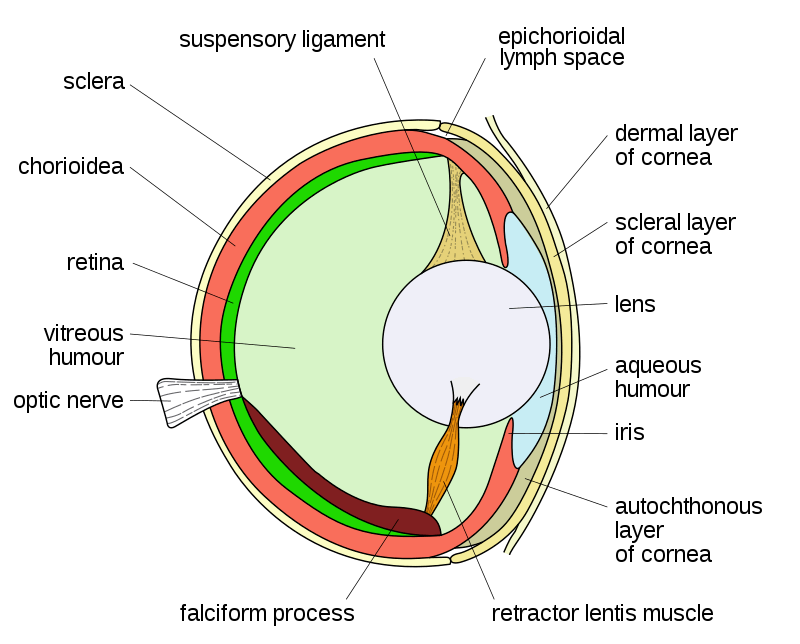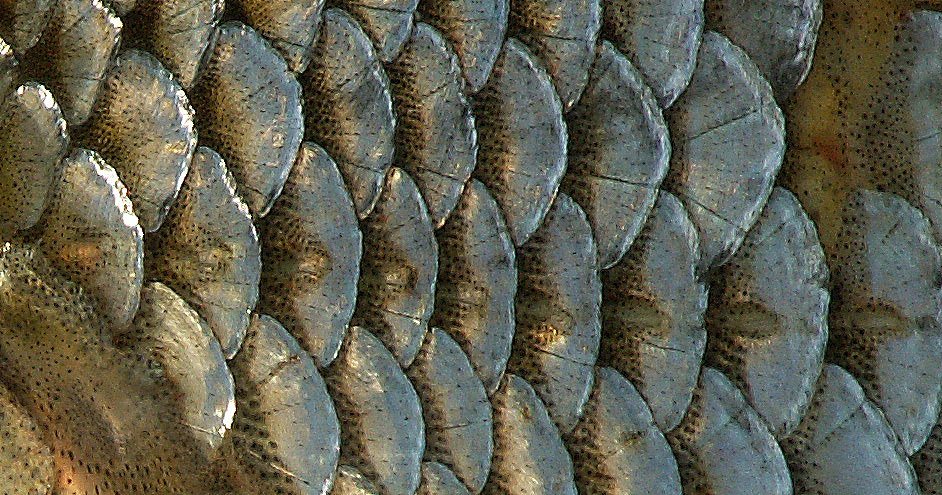So your first question would be:
What are the five senses of fish? The five senses that fish have are:
- Vision
- Smell
- Taste
- Hearing
- Lateral Line
By the end of this article, you will completely understand these five senses and how knowing this information can help you catch more fish!
The Five Senses of Gamefish
Depending on the conditions fish find themselves in will determine what senses they use more. For example, if the water is cloudy or mucky and a lot of debris is stirred up gamefish will use their hearing, smell, taste, and lateral line.
If the water is clear they will make better use of their vision. I will explain each of the five senses of fish so that you get a better understanding of how fish operate underwater.
Vision

All fish have eyes but some fish species see better in certain conditions than others. All gamefish have two types of receptors. They are:
- Rods
- Cones
The rods are the intensity receptors and the cones are color receptors. Fish such as sunfish and bass which are shallow water fish have a high cone to rod ratio. Having this high ratio allows them to see color just like a human would.
Also shallow water fish see color better than their deepwater counterparts. It’s amazing how nature equips animals with the senses they need for the specific situation they are in.
Deepwater fish like northern pike and walleye don’t need to see color because color becomes distorted the deeper in the water you go. You can only see the color red up to 10 feet of water and blue becomes nonexistent at 50 feet. So being able to see color does no good to deepwater fish. Northern Pike and walleye need to rely more on their other senses.
Another factor is if the water is cloudy or at night both shallow water and deepwater fish have to rely on their other senses to navigate the waters accurately.
Hearing
Fish don’t hear like humans because they don’t have external ears or an eardrum. In order for fish to hear they rely on small internal ear bones that vibrate from the external sounds in the water. This is called bone conduction.
Although fish don’t have ears like humans they do have what is called Otolith organs that are an inner ear of fish. Humans have this organ as well in our ears. It helps with keeping our equal Librium in balance. The otoliths also help us perceive our sense of speed when we are traveling and in fish, it does the same thing. It works with the gravitational pull of our planet.
Hearing is very important to fish especially at night or if the water is not clear. Using noisy baits such as Larry Dahlberg Whopper Popper works well for catching bass. Bass are a very receptive to noise especially in conditions that they can’t see well. You can also use rattles on your lures to imitate the noise that crawfish make when they bounce off the bottom of a river bed. Bass go crazy for that.
Lateral Line System

The lateral line system is the touch sensory organs of fish. These sense organs run the length of the fish from what’s called the head canal system to the trunk canal system. They have small pores along with the system that picks up vibrations and pressure variations in the water. There are then nerve endings that pick up these vibrations and send them to the inner ear bone of the fish where bone conduction takes place.
These pores can tell the fish that prey is present. They also tell the fish how big the prey is, how fast it’s going, and in what direction it’s going. The lateral line is one of the most important senses a fish has. For without it fish would be hard-pressed to catch their prey.
Smell
A fish’s sense of smell is important because that is another sense that they use to pick up predators or prey that are in the area. Smell because more important when the water is cloudy or at night and if the sound is not there.
The current of the water plays a role because the smell of their prey or predators will flow with the current of the water. Some fish use scent more than others.
Fish such as bream, salmon, catfish, and trout use their smell much more than northern pike, bass, and walleyes. As a matter of fact, salmon can find the home rivers that they come back to spawn in using their sense of smell. They can actually remember the smell of the river that they have been before. To me, that is just amazing!
This is why fish like bream or catfish go after smelly type baits like scented plastic worms. You can also use a liquid base to add to your bait. Anything with a strong smell that humans would not like fish like catfish, bullheads, and bream will love. A good blood smell will go a long way in catching more fish like the ones I just described above.
Taste
The last fish sense is taste. Most fish don’t use taste as much as they do smell. But bottom feeders like catfish and bullheads use their whiskers that have taste buds at the end of them to taste thier prey and other goodies at the bottom of the lake or river.
All fish have a sense of taste. Taste buds are located at the end of the whiskers or barbels as I said above. Fish also taste with their fins, mouth, and on their tongue. Catfish have what’s called chemoreceptors all along their bodies. Letting them taste everything they touch while swimming. Fish can taste:
- Bitter
- Sweet
- Sour
- Salty
Understanding the Five Senses of Fish
Once you have a good understanding of the five senses of fish and how they use these senses to navigate the waters you will be better equipped to use this knowledge to catch more fish.
You can use visual baits and smelly baits depending on the fish you are trying to catch and what conditions you find yourself fishing in. All of this plays a role in how many fish you will catch.
If the water is clear and your fishing during the day in shallow water you will want to focus on using baits that are colorful and stand out visually because in this condition fish will be relying on their vision and if the fish are there you will catch more of them.
When using colorful baits you will want to experiment with different colors to find out which colors are best used for that day and time you are fishing.
If you are fishing in dark waters at night for deepwater fish you will want to rely on smelly and rattle type baits to catch more fish. Experiment with different smells and types of bait to see what works best. Before you know you will be catching more fish then you can keep!
I hope you got some useful information from this article and if you have any questions or comments please leave them below. I would be glad to answer them to the best of my ability. Thanks for reading and Happy Fishing!


Cory Haasnoot
Cory is a content writer-editor and founder of Tackle Box Talk. Favorite Quote: "Give a man a fish, and you feed him for a day. Teach a man to fish, and you feed him for a lifetime."